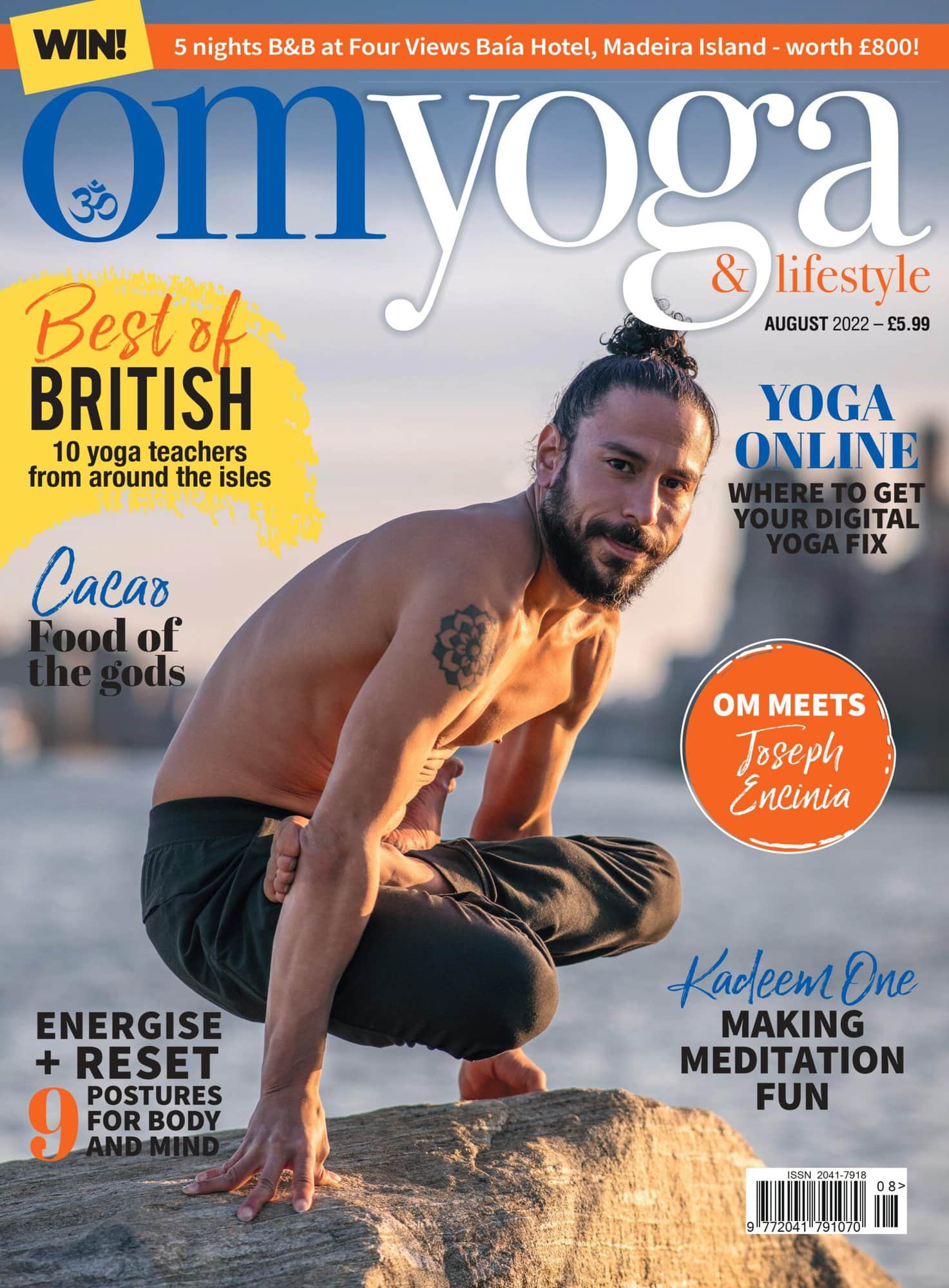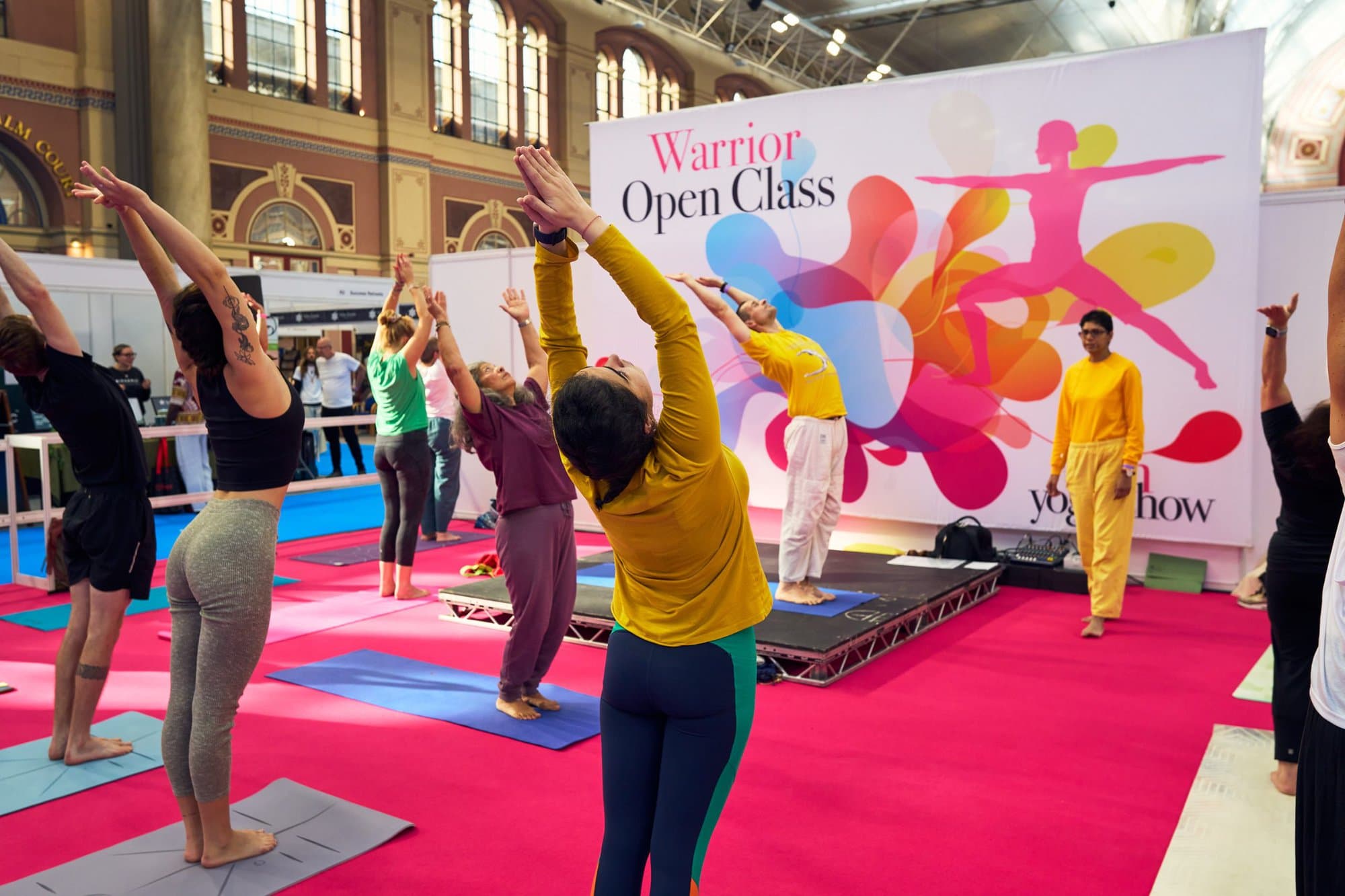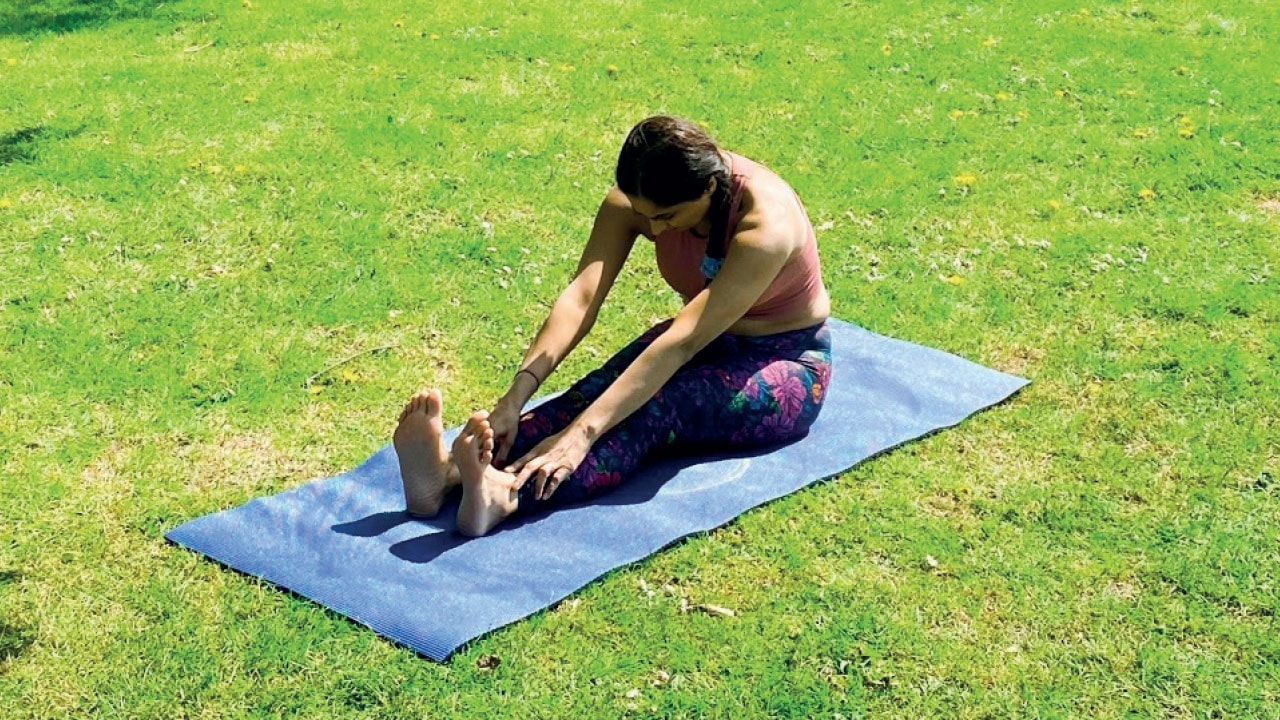
Love thy gut
Simple yoga poses and health hacks to give your tummy the love it deserves. By Dr Bhav Gami
The gut microbiome contains a diverse array of micro organisms in the human digestive system, which is innate at birth. The development of this microbial system occurs at birth and its modification occurs with nutritional, environmental (including mental and physical habits) and genetic factors. This change in the microbial composition, can alter digestion, intestinal permeability, metabolic, as well as the immune response.
The ‘gut and brain axis’ is believed to be well established, wherein the gut receives and sends messages via the enteric nervous system through nerve pathways, as well as via the bloodstream. Thus, the gut and its microbiome affect one’s immunity, hormonal function and the nervous system, as well as regulation of behaviour. Therefore, stress can be affected by these regulatory signals of the enteric nervous system.
Research with probiotics has shown a strong correlation to certain states of anxiety and depression. Some strains of natural flora bacteria, such as Lactobacillus species, are believed to provide a dampening of the central response system. Other strains of bacteria are also believed to reduce cancer cells in laboratory studies.
How to improve gut health
Maintain a healthy balanced diet with:
1. Taking prebiotics and probiotics, either through natural foods or supplements
2. Reduced sugar/sweetener consumption
3. Reduced processed foods
4. Regular exercise
5. Reducing stress
These are all important factors in improving gut health as well as general health and wellbeing.
Benefits of yoga in gut health
The practice of yoga, which brings harmony between mind, body and spirit, allows us to reduce inflammatory components through meditation, specific poses and breath work. An array of asanas are believed to aid in helping optimise our gut health. Various twisting poses are thought to help with eliminating toxicity and congestion, while other poses can help with internal massage of abdominal organs such as the colon, liver, spleen, adrenals and kidneys, again helping the organs to eliminate waste through movement.
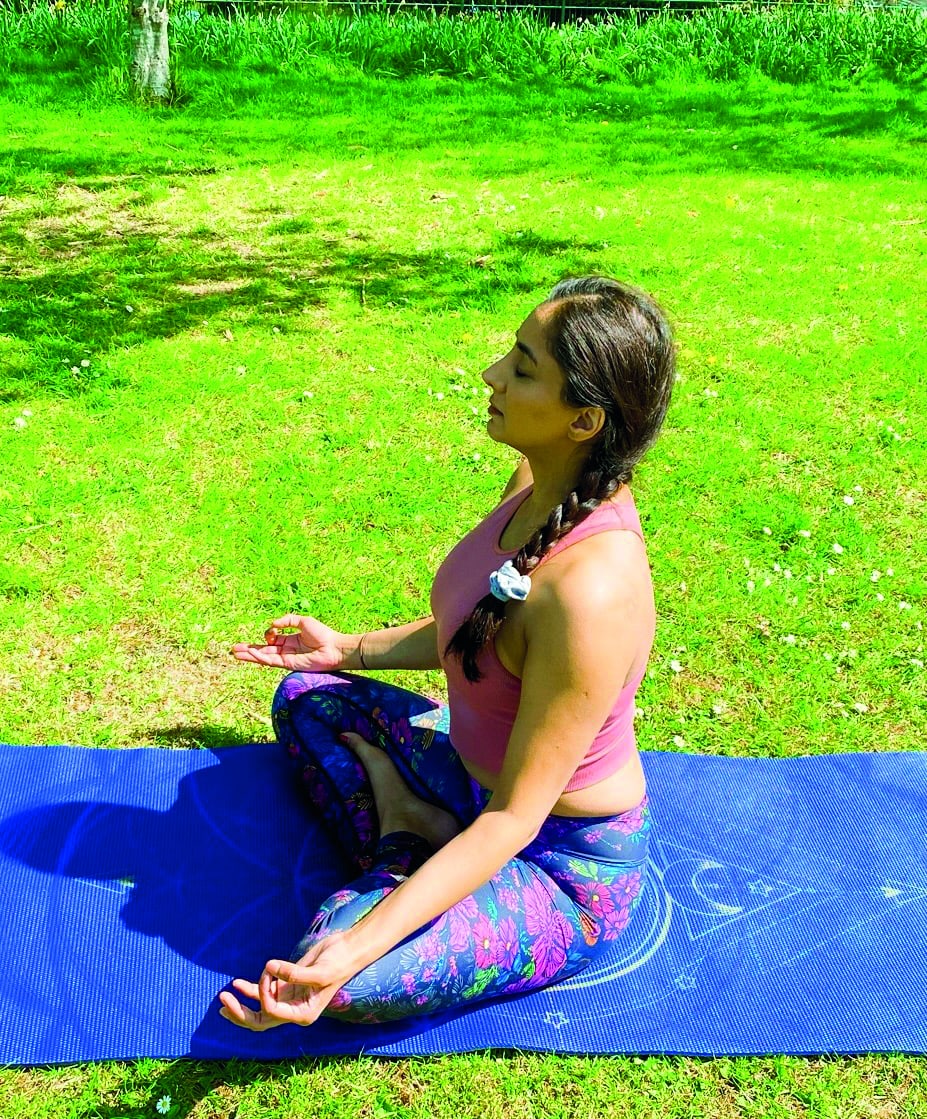
Pranayama
Simple pranayama or breathing exercises can help reduce anxiety and stress-induced bowel irritability. Exhale deeply through the nose, then inhale slowly through the nose. Repeat 5-10 times, each time focusing on the breath.

Child’s Pose (Balasana)
This pose is believed to help relieve constipation. It compresses the abdomen to massage your internal organs whilst sitting on your heels. Sit on your knees and press them together. Fold your thighs so the body is positioned over them. Put your forehead on the mat and gently rest it there. At the same time, stretch your hands back, or in front, or in the direction of the feet. Gently, every 10-20 seconds, exhale in and out. Keep yourself in the pose as long as you feel comfortable.
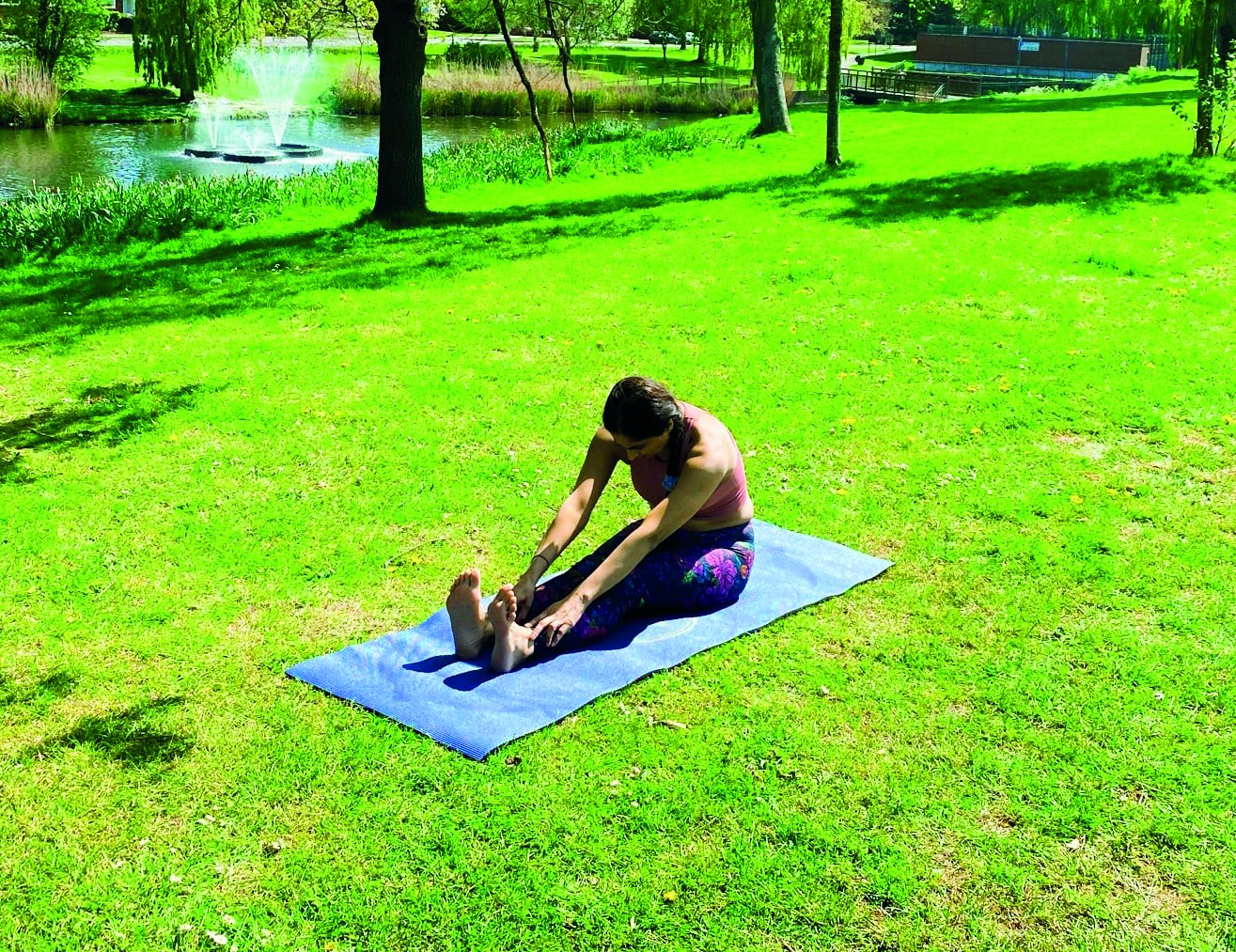
Seated Forward Fold (Pachimottanasana)
Forward folds helps in toning and facilitating a better connection between the brain and the gut, thereby improving better circulation and digestion. Sit on your mat with your legs straight, extended forward, and the soles of the feet flexed up towards the sky. You can use a block to lean on as well. Extend your arms next to your ears. Hinge forward at the hips and fold forward. Reach for the ankles, shins or your thighs, making sure you are breathing deeply in and out. Hold for 5-10 breaths and then come out of the pose gently.
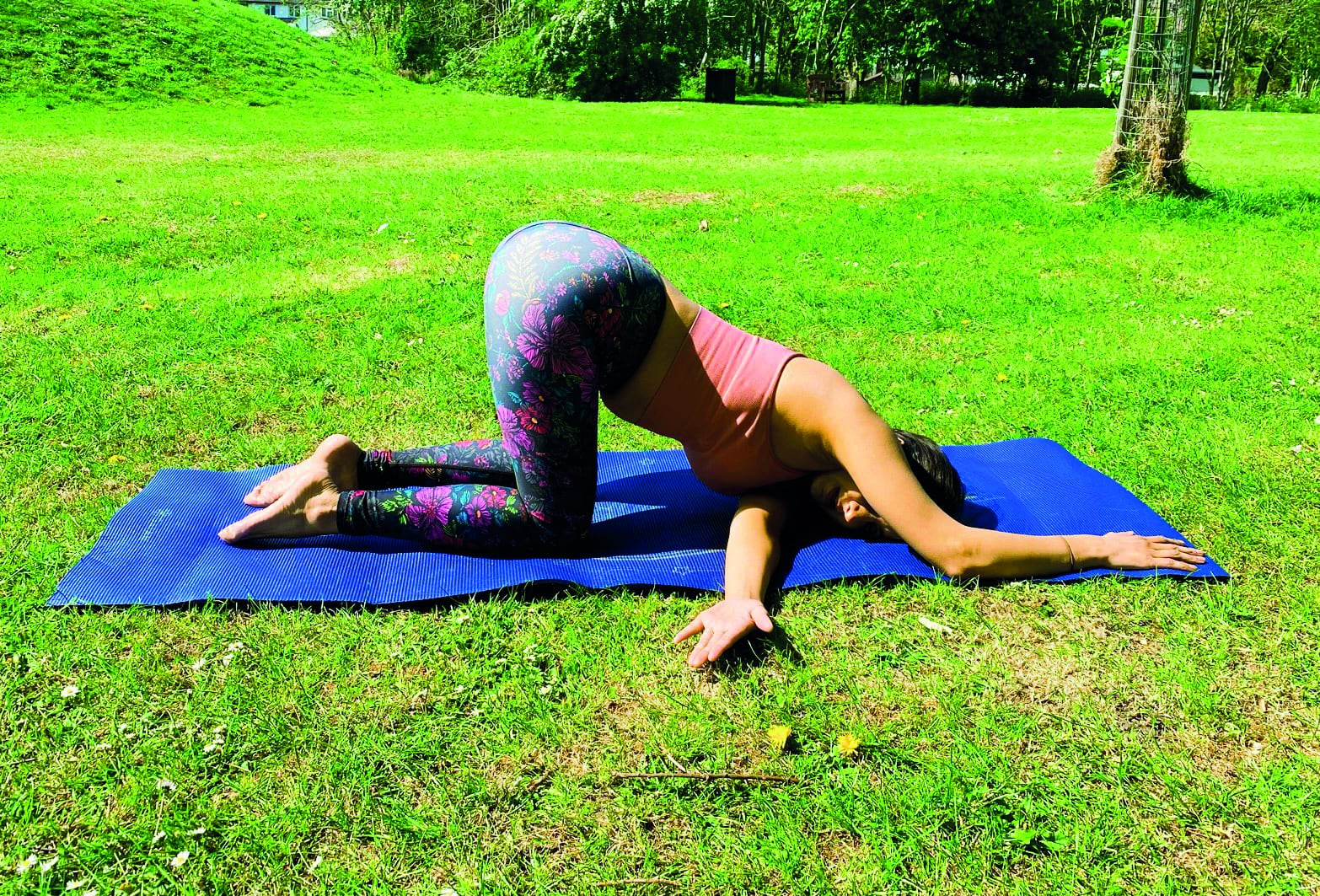
Thread the Needle (Urdhva Mukha Pasanana)
From child’s pose, begin by pushing out onto your hands and knees. Place one hand in the centre of the mat, directly under your face. Then extend the opposite arm towards the sky. Then place the extending arm under your body towards the opposite side, resting your shoulder and cheek on the mat. Hold for 5-10 seconds. Repeat on the other side.
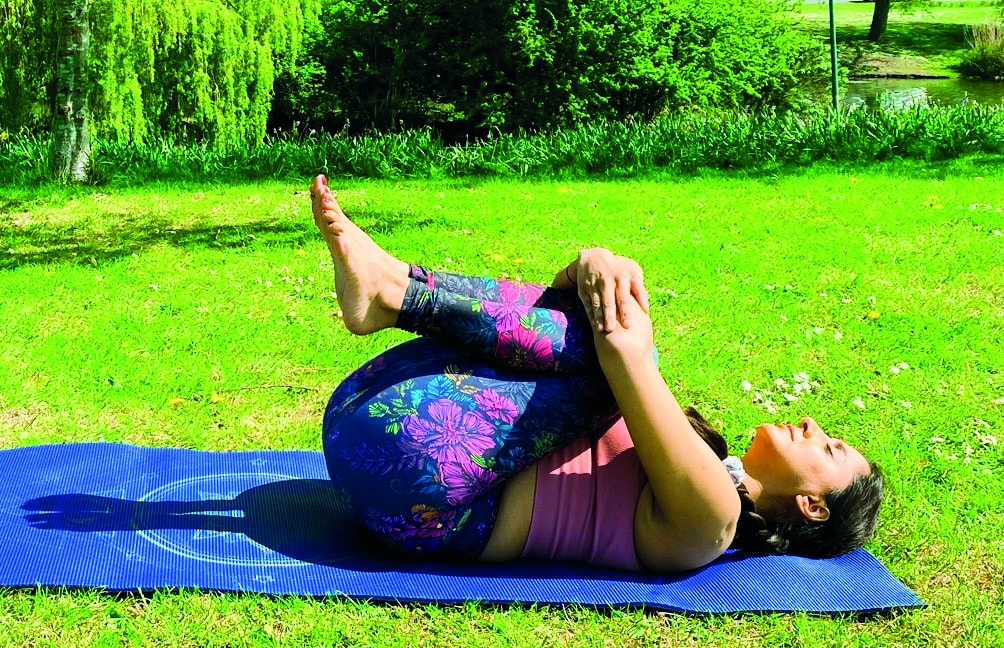
Wind Relieving Pose (Pavanamuktasana)
This pose is useful in removing congestion in the digestive system as well as any emotional blockages. Lay gently on your back on the mat. Bend and hug one knee and then both knees into the chest. Exhale gently and inhale for 5-10 breaths. Release legs and repeat on the opposite side.
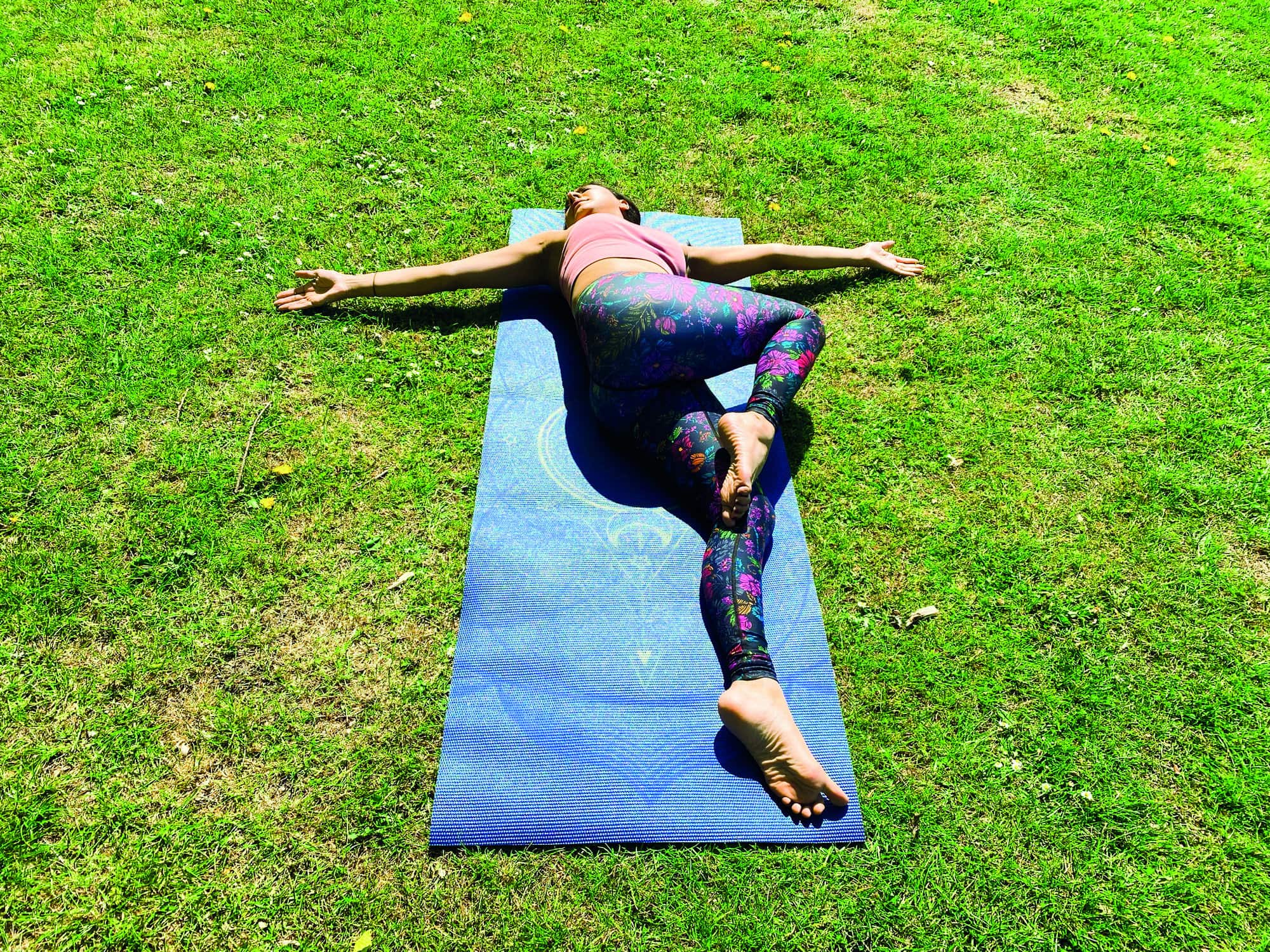
Supine Spinal Twist (Supta or Ardha Matsyendrasana)
This pose (and Revolved Crescent Lunge and Thread The Needle) helps stimulate digestion by massaging the abdominal muscles and twisting the internal organs.
Digestion can be improved by compressing the colon depending on the direction of the twisting. The pose can also help with eliminating unwanted toxins. Lay on your back and bend your knees in the air and place them towards your chest. Now place your arms out to the sides in a ‘T’ position, around the ears with the backs of the hands, forearms and upper arms pressing gently down on the mat. While focusing on your breathing, on the exhale drop the right knee over the left side of the body, twisting the spine and lower back. Your gaze should be looking at the right finger tips. Making sure the shoulders are pressing against the mat, close the eyes, focus and relax into the pose. Allow gravity to pull the knee down. Breathe and hold for 6-10 breaths. To release, inhale and straighten your knee back to the mat. Repeat the steps for the other side.
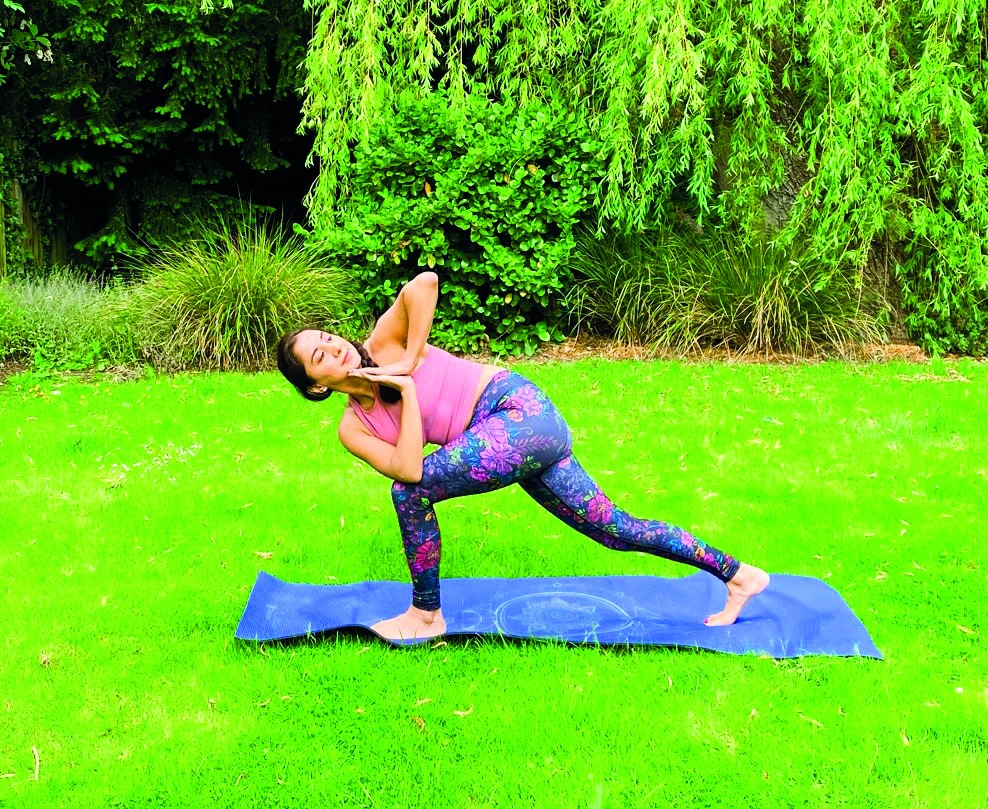
Revolved Crescent Lunge Pose (Parivrtta Anjaneyasana)
From mountain pose, standing tall, inhale and step the right foot back and extend the leg into a full lunge (lower the knee to the ground for beginners). Keep your left knee bent directly above the front of your ankle. Maintain symmetry in your hips. Place your palms together in prayer pose, with inner elbows bent. Then turn your navel and chest towards the inner left thigh. Prevent the right hip riding up in the waist by drawing back through the right heel. Turn your gaze towards the mat to ease the tension in your neck or towards the sky should you have no neck strain. To come out of the pose, step the right foot to meet the left foot, so you are sitting in a revolved chair position. Inhale and unwind your twist, thus straightening your legs, and extending your arms. Exhale and fold into uttanasana (standing forward fold pose), and on the inhalation slowly roll back up to mountain pose.
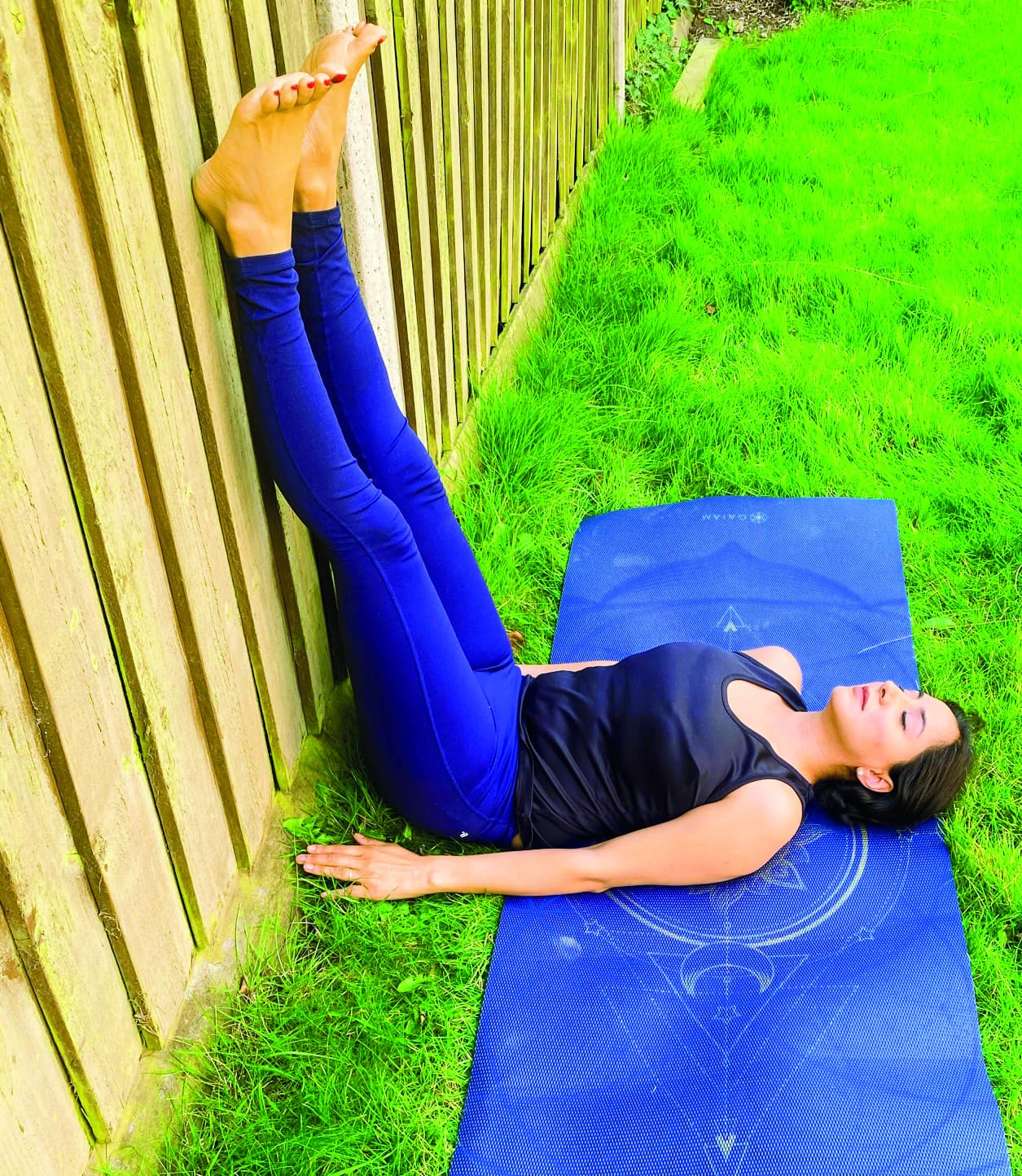
Legs Up The Wall (Viparita Karani)
This pose helps improves the ‘rest and digest’ nervous response, thereby stimulating digestion and improving circulation. Lay on your mat on your back, placing your bottom as close to the wall as possible. You may choose to use a bolster, a folded blanket or a cushion to support your hips so that your sacrum is supported. Fold your knees towards your chest, gently exhale and extend your legs upwards with the back of your legs against the wall. Keep your neck in a neutral position, softening the throat by lifting and releasing the base of the head away from the rear of the neck. Hold the stance for 5-15 minutes, focusing on your breath. To come out of the pose, bend your knees and push your feet against the wall. You may also want to place a support to one side and lower the pelvis onto it and then turn to that side.
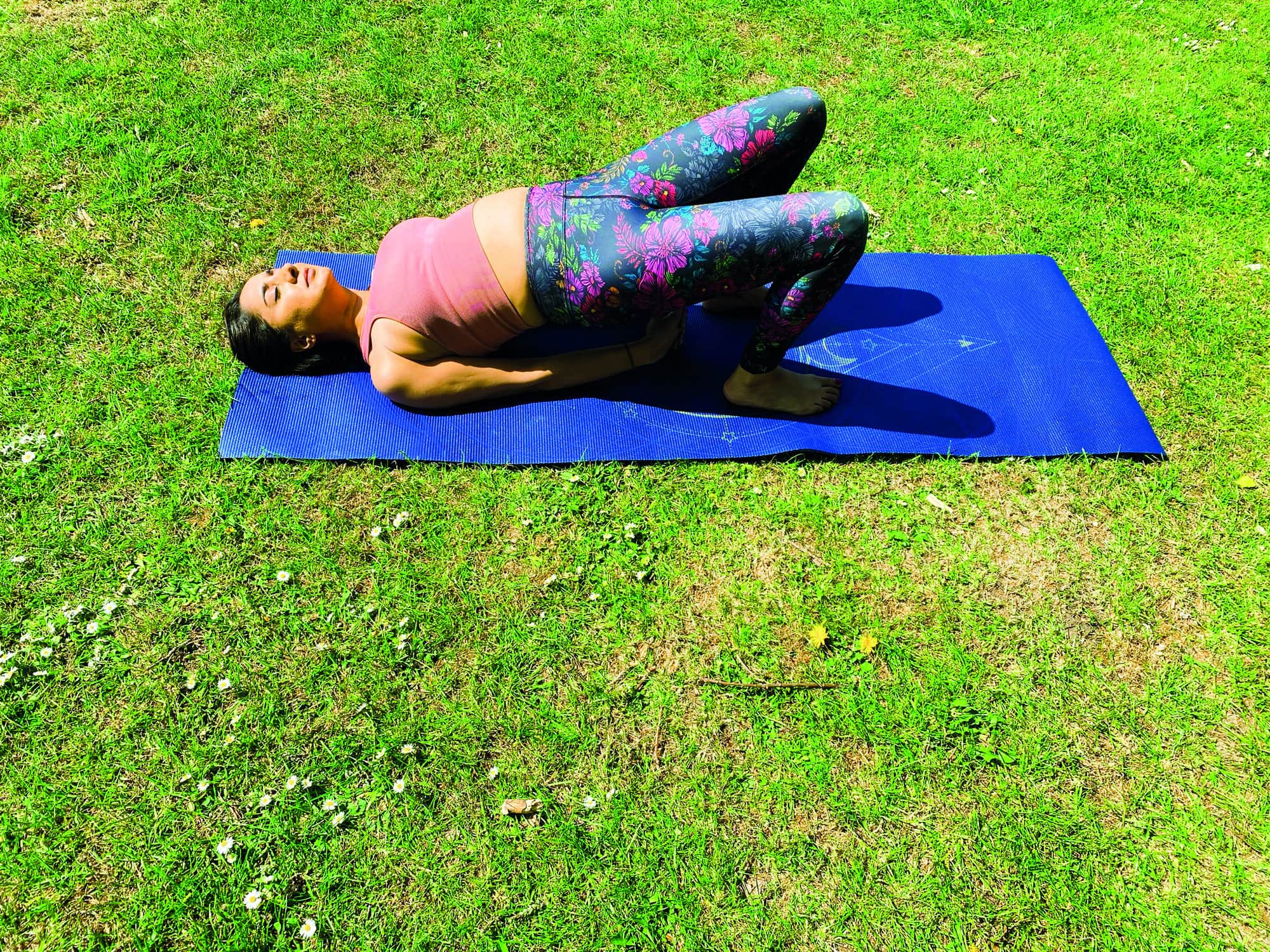
Bridge Pose (Setu Bandha Sarvangasana)
Lay on your back on the mat with your knees bent and soles of your feet on the ground. Keep your feet shoulder-length apart. Place your hands near the hips on the mat, palms down. Then inhale and push your hips up. Make sure your head, neck and shoulders are flat to the mat. Variations may include placing a block under your back directly under your sacrum allowing it to rest on it. Your arms may stay outstretched in front or next to your body.
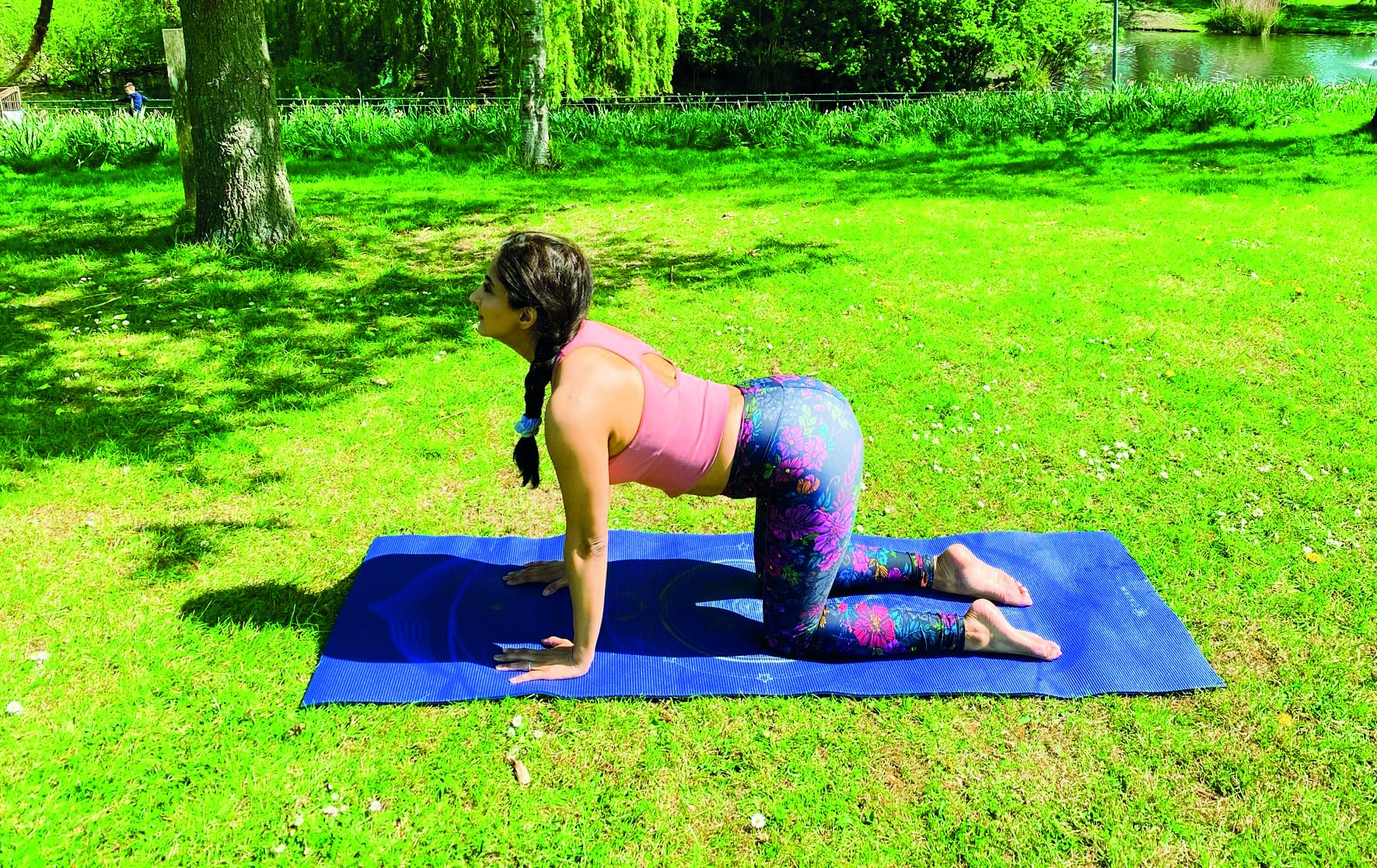
Cat/Cow Pose (Marjaryasana-Bitilasana)
The cat and cow poses open your stomach to relieve gas, bloating, and stress in the gut while helping the movement of food through the digestive system. Start on your hands and knees assuming a tabletop position. On all fours, inhale and let your belly drop down towards the floor. Ensure that your shoulders stay over your wrists all the time. Be sure to open up your chest while raising your shoulders and hips. Slowly exhale and return to the starting position. Do not stop at the starting position but keep lifting your back up towards the roof. You should bring your spine in a rounded position while dropping your head and tailbone at the same time. Keep switching your positions and breathe deeply while changing positions.
PROBIOTIC FOODS
- Yoghurt with fermenting milk
- Sauerkraut
- Kombucha
- Kimchi
- Kefir
- Dill Pickles
- Tempeh
- Sourdough bread
- Raw-unpasteurised cheeses (such as feta and gouda)
- Olives
PREBIOTIC FOODS
- Asparagus
- Yams
- Chicory roots
- Jeruselum artichoke
- Garlic
- Leeks
- Asparagus
- Bananas
- Barley
- Oats
- Apples
- Cocoa
- Flaxseeds
- Yacon root
- Seaweed
Precautions for inverted poses
Should you feel any pain, please release the pose. As your head will receive more blood flow, it is advisable to avoid inverted poses as it can worsen conditions such as glaucoma, detached retina and uncontrolled blood pressure.
Dr Bhav Gami aka Yogini Medic is a yoga teacher and London-based holistic GP. Connect with her on Instagram @yoginimedic


